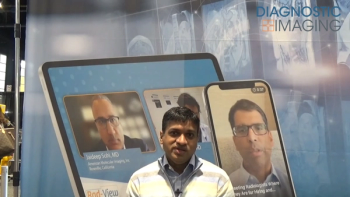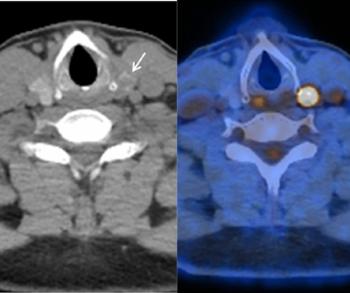
GE claims about new CT make competitor cry foul
Toshiba cites product facts, history of AquilionClaims by GE Medical Systems regarding its newly released CT scanner are in dispute. A press release issued by GE June 25 described the company's LightSpeed Pro 16 as the "first
Toshiba cites product facts, history of Aquilion
Claims by GE Medical Systems regarding its newly released CT scanner are in dispute. A press release issued by GE June 25 described the company's LightSpeed Pro 16 as the "first 16-slice system with routine 0.4-second gantry rotation speed," a claim that drew the ire of executives at Toshiba America Medical Systems.
"It's an interesting phenomenon. GE has gotten to the point of catching up competitively, but they make it sound like this is brand new technology," said John Zimmer, vice president of marketing for Toshiba America.
Toshiba beat GE to the punch in December 2002, he said, when the company commercially released its flagship Aquilion 16-slice scanner at the annual RSNA meeting (SCAN Special Report 12/25/03). A banner draped across the CT section of the booth drew attention to the system's 400-msec rotational speed.
"We drove to 0.4-second rotation because it provides a lot of clinical flexibility when doing cardiac scanning," said Doug Ryan, director of the CT business unit for Toshiba America.
GE spokesperson Patrick Jarvis said this is the point of the GE press release, that the new LightSpeed is not just for cardiac imaging.
"If you read our release carefully we say that the LightSpeed Pro 16 offers routine 0.4-second gantry rotation speed-and that means across applications," Jarvis said.
But the same can be said for the Toshiba system, according to Zimmer. The Aquilion 16 can scan any part of the body at 400-milliseconds rotation speed. The question, he said, is why anyone would want to do that.
"You have to look at clinical value, and when you do, you see that the difference between 0.4-second and 0.5-second rotation time matters only when you are looking at anatomy in motion," he said. "So the drive to develop this capability ultimately has been to support applications that involve motion."
Toshiba has focused heavily on the cardiac capabilities of the 16-slice Aquilion because the gantry's speed of rotation and the detector's ability to produce 16 isotropic 0.5-mm slices are especially suited to cardiac applications, which demand high spatial and temporal resolution.
Ryan also noted that Aquilion's slices are thinner than the 0.625-mm slices possible with the LightSpeed detector, Ryan said. But that did not stop GE from claiming "unprecedented power, speed and image resolution" for its newly unveiled LightSpeed Pro 16, he said.
Zimmer and Ryan are the latest industry executives to question GE claims. In May 2002, GE statements at the annual meeting of the International Society for Magnetic Resonance in Medicine angered executives at two other companies. GE claimed its Excite MR technology, a data pipeline for the company's high-field Signa systems, was "the biggest breakthrough in MR in a decade." Executives at Siemens Medical Solutions and Philips Medical Systems said GE's Excite was more catch-up than breakthrough technology (SCAN 5/29/02).
The latest release of LightSpeed is in the same category, according to Zimmer.
Newsletter
Stay at the forefront of radiology with the Diagnostic Imaging newsletter, delivering the latest news, clinical insights, and imaging advancements for today’s radiologists.



























